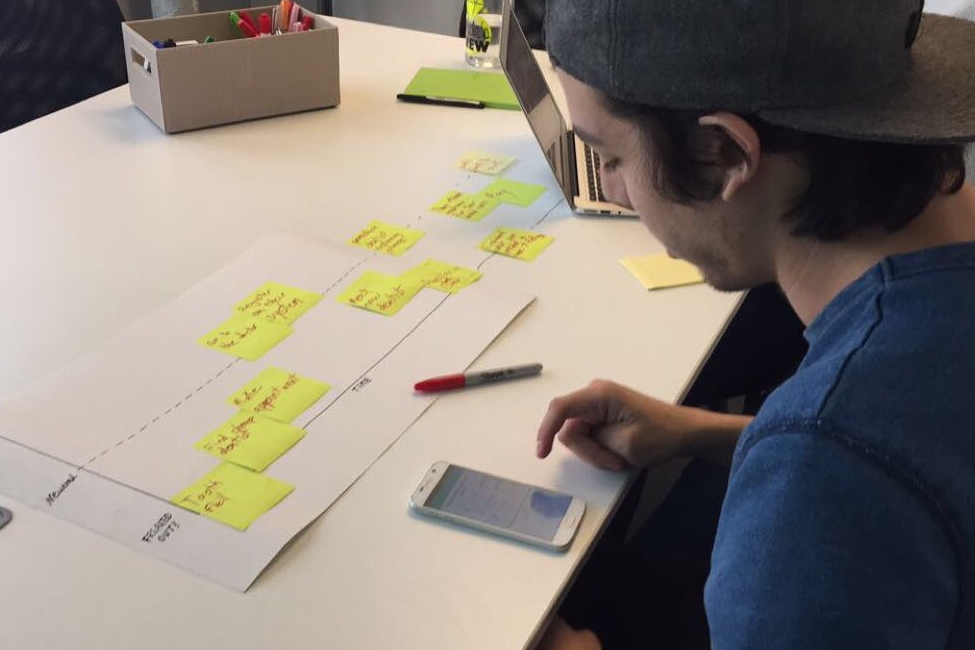First Derm
User Research
What drives people to take care of their health?
About
First Derm’s mission is to become the defacto point of contact for skin-related medical inquiries. Users can anonymously submit pictures of their affected areas through the app, and licensed dermatologists will respond within 48 hours with medical guidance. First Derm helps users make informed health decisions through over-the-counter prescriptions or recommendations to see a physician.
Challenge
To improve usability of the iOS and Android apps and explore areas to improve conversion rates.
My Role
I co-led the research team to speak to potential users and make design recommendations for First Derm’s iOS and Android apps.
Process
Competitive Analysis
- Spruce provides a more in-depth look at who will be treating you – i.e. certifications & pictures of doctors
- Klara includes a feature to chat with your doctor
- YoDerm currently has a web-app, only, where users have to pay first before they do anything; however, the doctors are licensed to provide diagnoses and prescriptions.
- Dermatologist OnCall bundles packages that users with recurrent skin conditions might be interested in, as well as doctor reviews.
Assumptions
- People value time and are willing digitally replace face-time with their doctors
- Users don’t need to see who their doctor is to trust the app’s recommendations
- Those with STDs may want to maintain anonymity
- Users rely on First Derm as an alternative for urgent cases that don’t require the ER
- Users trust the means and legitimacy of digital health guidance and, therefore, will pay for these services
Why do people feel better when they Google their health symptoms?
Primary Research Objectives
- Understand individuals’ emotions and concerns when dealing with their health
- Determine how secure people feel in sharing confidential or sensitive information over mobile and web
- Distinguish what leads people to pursue medical or dermatological care, reactively vs. proactively
- Identify pain points with the current app via usability testing
Provisional Personas
Although there could be a variety of users, we focused on two that would represent significant subsets of the target audience.
User Interviews & the Happiness Roadmap
First, let's understand how people decide to seek medical treatment.
We interviewed 6 users that met the millennial or parent personas to gain an in-depth understanding of how people treat their health, seek medical information, and make health-related decisions. We were curious what factors people considered before selecting their doctors. We wanted to see where First Derm fits in in the journey toward treatment.
We came up with the Happiness Roadmap, an interactive exercise for participants to document their process from discovery to treatment and map it on an emotional scale. This allowed us to visualize a user's journey from discovery of a health issue to treatment, along with analyzing the process of searching for and booking a dermatologist.
We did this to understand how users typically responded to their health issues, whether they contacted their doctors right away or waited until they could no longer withstand the pain. Not only did we observe the sequence of actions, we had the users provide a self-assessment of their emotions from "freaking out" to "feeling happy." This allowed us to note at what point did users typically feel more calm.
“I think of my kids’ health in two categories: ‘wait it out’ and ‘emergencies.’ The reality is, most dermatological issues are not an emergency. I’d be hesitant to to pay out of pocket for something that isn’t an emergency, and if it is an emergency, I’d want to see a real human and doctor.”
Results
After speaking to users and conducting the happiness roadmap activity, we observed similarities for each persona type. For example, those fitting the male millennial persona were more likely to Google their symptoms and attempt to wait it out, until a certain pain threshold was met before contacting a doctor. We noticed a temporary boost in positive emotions, when they Googled their symptoms or used technology to find out more information.
The young parent users were quicker to react and seek help. They felt better, almost immediately after receiving medicine to administer to their kids.
Usability Testing
We conducted usability tests with three iOS users and three Android users. We asked users to perform five tasks on the app:
- Create a new case
- View an existing case
- Find a doctor
- Share this app
- Find a pharmacy
To synthesize, we discussed our findings and wrote important items on individual sticky notes. We then grouped the items by category and use this method to decide on the most important areas to tackle first











